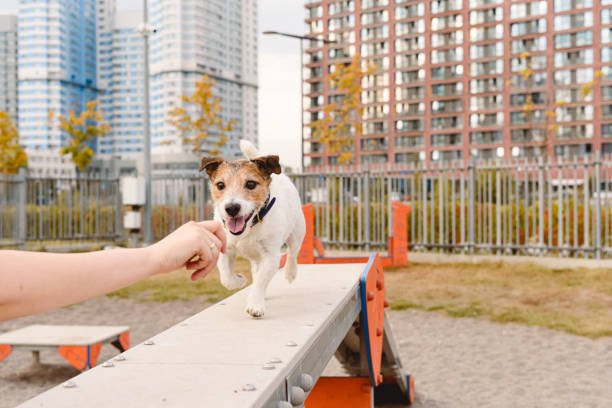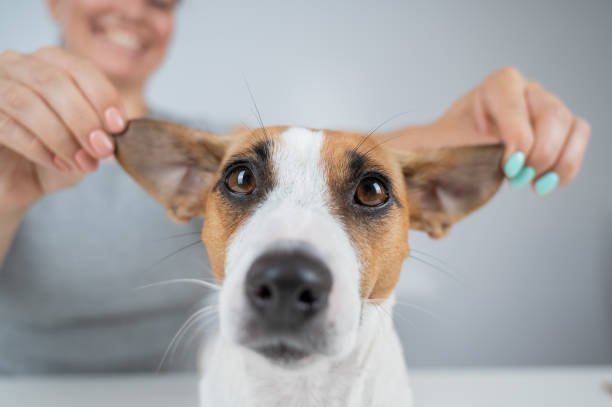How To Train A Jack Russell Puppy – Easy To Read Step By Step
Welcome to our easy-to-follow guide on training a Jack Russell puppy. Jack Russells are renowned for their intelligence, energy, and charming personalities, making them a popular choice among dog enthusiasts. However, their boundless enthusiasm can sometimes pose challenges for owners. That’s where proper training comes in!
In this step-by-step guide, we will walk you through the essential training techniques for your Jack Russell pup, ensuring that both you and your furry friend can enjoy a harmonious life together. We’ve designed this guide to be easy to read and understand, whether you’re a first-time dog owner or looking to refine your training skills.
Why Training Matters
Training your Jack Russell puppy is not just about teaching basic commands; it’s about creating a strong bond, building trust, and ensuring the safety and well-being of your four-legged companion. A well-trained Jack Russell is more likely to be a happy and well-adjusted pet, which leads to a positive living environment for both of you.
Easy-to-Follow Steps
We understand that not everyone is a professional dog trainer, which is why we’ve structured this guide to be user-friendly and accessible. You don’t need a degree in canine behavior to train your Jack Russell successfully; all you need is patience, consistency, and a willingness to learn.
Are you ready to embark on this training journey with your Jack Russell puppy? Let’s get started with the fundamentals of pre-training preparation. We’ll cover everything from puppy-proofing your home to setting a consistent training schedule, ensuring you’re fully prepared for the training process ahead. Remember, the key to successful training is to enjoy the process and celebrate each small victory along the way.
So, leash up your pup, grab your treat bag, and let’s dive into the world of Jack Russell training!
Pre-Training Preparation
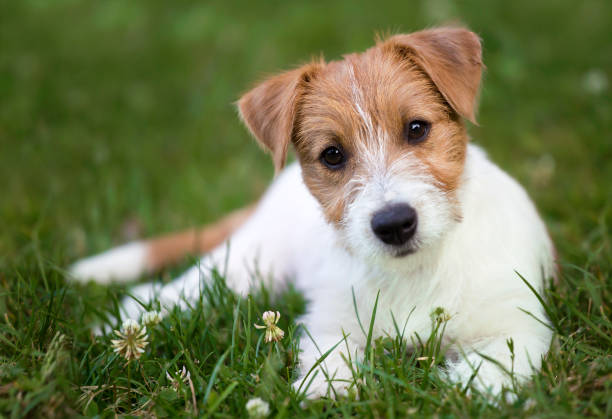
Before diving into the nitty-gritty of teaching commands and behaviors to your Jack Russell puppy, it’s essential to prepare your environment and yourself for effective training. A well-prepared foundation will make the training process smoother and more successful.
Puppy-Proofing Your Home
Puppy-proofing your home is the first step in creating a safe and conducive training space for your Jack Russell. These energetic little dogs are known for their curiosity and love of exploring, which can sometimes get them into trouble. Here are some essential tips for puppy-proofing:
Remove Hazards: Identify and remove any potential hazards from your puppy’s reach. This includes toxic plants, chemicals, small objects that could be swallowed, and electrical cords.
Secure Trash Bins: Make sure your trash bins are inaccessible to your puppy. Jack Russells are notorious for getting into garbage and making a mess.
Gated Areas: Use baby gates to limit access to certain rooms or areas in your home, especially during the initial stages of training.
Pick Up Items: Keep your living space clutter-free. Pick up shoes, children’s toys, and other items that your puppy might chew on.
Crate Training: Consider crate training (we’ll cover this in detail later) to give your puppy a safe space and prevent destructive behavior when you’re not around.
Gathering Essential Training Supplies
To effectively train your Jack Russell puppy, you’ll need a few essential supplies. These include:
Collar and Leash: Choose a well-fitting collar and a sturdy leash. The collar should have identification tags with your contact information.
Treats: High-quality treats are a valuable tool for rewarding good behavior. Small, soft treats are often the most effective during training.
Toys: Invest in a variety of dog toys to keep your puppy engaged and entertained. Interactive toys can be especially helpful in training.
Clicker: Many dog owners find a clicker useful for marking desired behaviors during training.
Puppy Crate: If you decide to use crate training, make sure you have an appropriately-sized crate for your growing puppy.
Setting a Consistent Training Schedule
Consistency is key in dog training. Establishing a regular training schedule helps your Jack Russell understand what’s expected and when to expect it. Here’s how to do it:
Short, Frequent Sessions: Keep training sessions short, around 10-15 minutes, and repeat them several times a day. Puppies have short attention spans, so brief, focused sessions work best.
Same Time, Same Place: Choose a consistent time and location for training. This routine helps your puppy associate the environment with learning.
Be Patient: Puppies learn at different rates, so be patient and adjust your schedule to your pup’s individual needs.
With your home puppy-proofed and your training supplies in order, you’re now ready to start teaching your Jack Russell puppy the basic commands. In the next section, we’ll cover the fundamental commands like “Sit,” “Stay,” and “Come.” These commands form the building blocks of more advanced training, so let’s get started!
Basic Training Commands
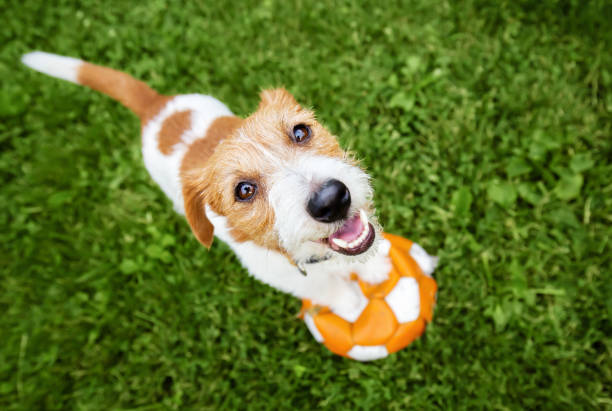
Teaching your Jack Russell puppy basic commands is the foundation of a well-behaved and obedient pet. These commands are not only essential for your puppy’s safety but also for building a strong bond between you and your furry friend. In this section, we’ll cover three fundamental commands: “Sit,” “Stay,” and “Come.”
Sit
The “Sit” command is one of the first commands you should teach your Jack Russell. It’s a versatile command that can be used in various situations, from greeting visitors to preventing your puppy from jumping on people. Here’s how to teach your pup to sit:
Start with Treats: Hold a treat close to your puppy’s nose, and then slowly raise it above their head. As your puppy follows the treat with their nose, their rear end should naturally lower to the ground.
Use the Command: As your puppy’s rear end touches the ground, say “Sit” in a clear, consistent voice.
Reward and Praise: As soon as your puppy sits, immediately give them the treat and offer plenty of praise. Use a happy, encouraging tone to let them know they’ve done well.
Practice: Repeat this process in short training sessions, gradually increasing the duration your puppy holds the sit position.
Stay
The “Stay” command is crucial for keeping your Jack Russell safe and well-behaved in various situations. Teaching your puppy to stay in one place until given a release command can prevent them from running into danger. Here’s how to teach your puppy to stay:
Leash and Collar: Start with your puppy on a leash and collar for safety.
Get in Position: Have your puppy sit in front of you.
Use the Command: Hold your open palm in front of your puppy’s face and say “Stay” in a firm but gentle voice.
Take a Step Back: Step back just one step, maintaining eye contact with your puppy. If they stay in place, immediately return to them and reward with a treat and praise.
Increase Distance and Duration: Gradually increase the distance and duration of the “Stay” command as your puppy becomes more proficient. Always reward and praise when they obey.
Come
The “Come” command, also known as recall, is essential for ensuring your puppy returns to you when called. This is vital for their safety, especially when they are off-leash in a park or other open spaces. Here’s how to teach your puppy to come when called:
Start Indoors: Begin in a quiet, indoor environment with minimal distractions.
Use a Leash: Attach a leash to your puppy’s collar to maintain control.
Get Down to Their Level: Crouch down to your puppy’s level and call their name followed by the command “Come.” Use an excited and welcoming tone.
Reward and Praise: When your puppy comes to you, offer a treat and lavish them with praise. Make it a positive and rewarding experience.
Practice in Different Locations: Gradually practice the “Come” command in different locations with increasing distractions, always rewarding your puppy when they respond correctly.
Remember that consistency and patience are key when training your Jack Russell puppy. Stay positive, use plenty of treats and praise, and keep training sessions short and fun. In the next section, we’ll delve into the importance of socialization and how to introduce your puppy to various environments and people.
Socialization

Socialization is a critical aspect of raising a well-rounded and well-behaved Jack Russell puppy. It involves exposing your pup to various people, animals, environments, and experiences to help them develop confidence and good behavior in different situations. Proper socialization can prevent fear and aggression issues later in life. Here’s how to go about it:
Importance of Early Socialization
Early socialization, ideally beginning as early as 7-8 weeks old, is vital for your Jack Russell puppy. During this critical window of development, puppies are more receptive to new experiences, making it the perfect time to introduce them to the world. Benefits of early socialization include:
Reducing Fear and Anxiety: Exposure to a wide range of stimuli helps puppies learn that new experiences are not something to fear.
Preventing Behavioral Issues: Properly socialized puppies are less likely to develop aggression or other behavioral problems.
Improved Adaptability: Socialized dogs are more adaptable and less stressed in various situations.
Exposing Your Puppy to Different Environments and People
Introduce New Environments: Take your puppy to different places, such as parks, pet-friendly stores, and quiet streets. Let them experience various surfaces like grass, concrete, and gravel.
Meet New People: Encourage your puppy to meet people of different ages, genders, and ethnicities. This helps them become comfortable around a diverse group of individuals.
Interact with Other Dogs: Arrange playdates with other friendly, vaccinated dogs. This promotes proper socialization with their own kind.
Positive Experiences: Make these encounters as positive as possible. Reward your puppy with treats and praise for good behavior and calm interactions.
Socialization with Other Dogs
Socialization with other dogs is an essential part of your Jack Russell’s development. Here are some tips for successful dog socialization:
Choose Playmates Wisely: Ensure that the dogs your Jack Russell interacts with are of similar size and temperament. Friendly and well-socialized dogs make better playmates.
Supervise Playtime: Always supervise play sessions to ensure they remain safe and positive. Pay attention to body language, and intervene if things get too rough.
Positive Reinforcement: Use treats and praise when your puppy interacts well with other dogs. Encourage good manners and sharing.
Gradual Exposure: If your puppy is new to dog parks or playgroups, start with smaller, controlled settings and gradually work up to more extensive interactions.
Remember that socialization is an ongoing process. Continue to expose your Jack Russell puppy to new experiences and people throughout their life. By doing so, you’ll help them grow into a well-adjusted, friendly, and confident adult dog. In the next section, we’ll discuss the benefits of crate training for your puppy and how to introduce them to their crate.
Crate Training
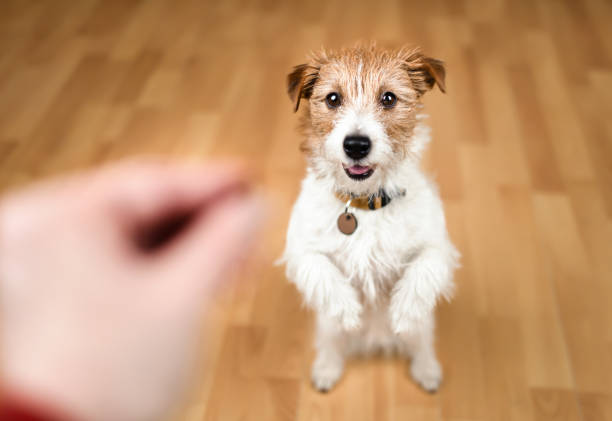
Crate training is a valuable tool for both housebreaking and providing your Jack Russell puppy with a secure and comfortable space. When done right, it can make life easier for both you and your furry friend. Here’s how to get started with crate training:
Benefits of Crate Training
Crate training offers several advantages for your Jack Russell puppy:
Safe Space: The crate provides a safe, secure environment where your puppy can rest without being disturbed or getting into trouble.
Housebreaking Aid: Dogs instinctively avoid soiling their sleeping area. This can be a helpful aspect of housebreaking.
Travel Convenience: Crate-trained dogs often find travel, whether by car or plane, less stressful.
Behavior Management: Crates can be used to manage destructive behaviors and keep your puppy out of trouble when you’re not around.
How to Introduce the Crate
Introducing the crate to your puppy is a gradual process that should be associated with positive experiences:
Select the Right Crate: Choose a crate that is just large enough for your puppy to stand up, turn around, and lie down comfortably. You can get a larger crate as your puppy grows.
Make It Inviting: Place soft bedding, a few toys, and some treats inside the crate to make it an inviting space. Leave the door open initially.
Positive Associations: Encourage your puppy to explore the crate on their own. Use treats and praise to create positive associations.
Feeding in the Crate: To further associate the crate with positive experiences, consider feeding your puppy their meals inside the crate.
Gradual Progress: Over time, gradually close the crate door for short periods while your puppy is inside. Stay nearby and reassure them. Open the door once they seem comfortable.
Crate Training Tips for Jack Russells
When using a crate for training your Jack Russell puppy, keep these tips in mind:
Short Intervals: Start with short periods of confinement and gradually increase the duration. Avoid leaving your puppy in the crate for extended periods, especially when they’re very young.
Avoid Punishment: Never use the crate as a form of punishment. It should be a positive space for your puppy.
Regular Bathroom Breaks: Take your puppy outside to relieve themselves frequently, especially after meals and naps. The crate is not meant for extended periods of confinement without breaks.
Nighttime Routine: At night, place the crate in your bedroom. Your puppy may find comfort in your presence and is less likely to feel anxious.
Stay Consistent: Consistency is key. Use the crate consistently for naps, overnight, and when you can’t supervise your puppy to prevent accidents and destructive behavior.
Crate training can take some time, but with patience and positive reinforcement, your Jack Russell puppy will come to see their crate as a safe and comfortable retreat. In the next section, we’ll tackle house training, a crucial aspect of bringing up a well-behaved and clean puppy.
House Training
House training, also known as house training or potty training, is a fundamental aspect of raising a well-behaved Jack Russell puppy. Successfully housebreaking your puppy will not only keep your home clean but also establish good habits for a lifetime. Here’s how to go about it:
Establishing a Bathroom Routine
Consistency is key when it comes to house training. Setting a regular bathroom routine will help your Jack Russell puppy understand where and when they should relieve themselves:
Frequent Potty Breaks: Take your puppy outside to their designated bathroom area frequently, especially after meals, waking up, or playtime.
Use Command Words: Use a specific command word like “Go potty” or “Do your business” when your puppy is eliminating. Be consistent with the word you choose.
Wait Patiently: Be patient during bathroom breaks. Give your puppy ample time to do their business. Some dogs may need a few minutes to get started.
Praise and Treats: When your puppy successfully eliminates outside, immediately praise them and offer a treat. Positive reinforcement helps them understand that they’re doing the right thing.
Dealing with Accidents
Accidents are a natural part of the housebreaking process. When they happen, it’s important to handle them correctly:
No Punishment: Never scold or punish your puppy for accidents. This can create fear and anxiety around the act of eliminating.
Clean Thoroughly: Clean any accident spots with an enzymatic cleaner to remove the scent and discourage your puppy from soiling the same spot again.
Supervision: Keep a close eye on your puppy when they’re indoors, especially when they haven’t gone out recently.
Positive Reinforcement in House Training
Positive reinforcement is a powerful tool in house training:
Praise and Treats: Use plenty of praise and treats when your puppy eliminates outside. Make them feel like they’ve accomplished something great.
Consistency: Be consistent with your praise and rewards. Your puppy will learn faster when they know they’re doing the right thing every time.
Crate Training: When you can’t supervise your puppy, consider using the crate to prevent accidents. Dogs are less likely to eliminate where they sleep.
Remember that every puppy is different, and some may catch on faster than others. It’s crucial to remain patient and consistent throughout the house training process.
In the next section, we’ll delve into leash training, teaching your Jack Russell puppy to walk well on a leash, which is vital for their safety and your enjoyment of outdoor activities together.
Leash Training
Leash training is a crucial skill for your Jack Russell puppy, as it ensures their safety and allows for enjoyable walks and outdoor adventures. This section will guide you through the process of teaching your puppy to walk on a leash without pulling or getting distracted.
Choosing the Right Leash and Collar
Leash Type: Start with a standard leash that is about 6 feet long. Nylon or leather leashes are durable and easy to handle.
Collar Type: Opt for a well-fitting collar. A flat collar with an ID tag that includes your contact information is essential for safety. You can also consider a harness for added control and comfort, especially if your puppy tends to pull.
Teaching Loose Leash Walking
The goal of leash training is to teach your Jack Russell to walk calmly by your side without pulling. Here’s how to achieve this:
Indoor Practice: Begin leash training indoors in a quiet and familiar space. Attach the leash to your puppy’s collar or harness.
Walk Slowly: Start walking slowly, and encourage your puppy to follow you. Use treats to reward them for staying close and walking without pulling.
Stop and Wait: If your puppy starts to pull or gets ahead, stop walking and stand still. Don’t move until they stop pulling and return to your side.
Use Positive Reinforcement: Reward your puppy with treats, praise, and a calm, cheerful tone when they walk nicely beside you.
Be Patient: Leash training can take time. Be patient, and continue practicing short sessions regularly.
Dealing with Pulling and Distractions
Jack Russells are known for their high energy and curiosity, which can sometimes result in pulling on the leash and getting distracted during walks. Here’s how to address these issues:
Stop and Redirect: If your puppy starts to pull, stop and redirect their attention back to you. Use treats or a toy to regain their focus.
Stay Consistent: Consistency is essential. Apply the same principles during every walk, and reinforce the desired behavior with positive reinforcement.
Training Distractions: Practice walking in different environments with increasing distractions, such as other people, dogs, or wildlife. Gradually expose your puppy to new situations while maintaining control.
Exercise Before Walks: Jack Russells have high energy levels. Ensure your puppy gets sufficient exercise before a walk to reduce excess energy and make leash training more manageable.
Remember that leash training is a gradual process, and your Jack Russell puppy may require ongoing training to become a well-behaved walking companion. With patience and positive reinforcement, you can teach them to walk politely on a leash and enjoy outdoor adventures together. In the next section, we’ll dive into obedience training, where you’ll learn how to teach your puppy important commands for better control and communication.
Obedience Training
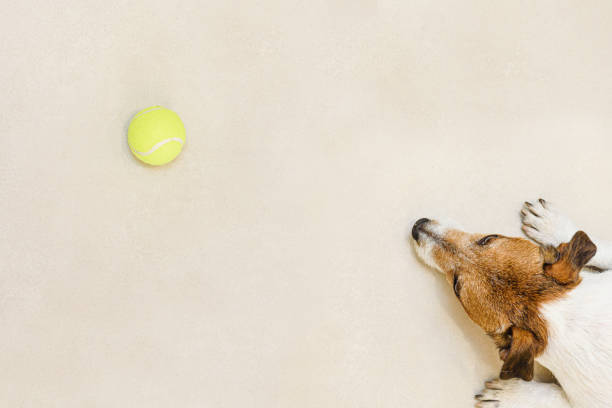
Obedience training is a fundamental aspect of raising a well-behaved and well-adjusted Jack Russell puppy. These training commands help establish control and effective communication with your furry companion. In this section, we’ll cover key obedience commands and how to teach them to your Jack Russell.
Recall and Response
Recall (Come): Teaching your puppy to come when called is one of the most crucial commands for their safety. Here’s how to do it:
Start indoors in a quiet space.
Get down to your puppy’s level and say their name followed by “Come” in an enthusiastic tone.
When they come to you, reward with treats and praise.
Gradually practice in different locations with increasing distractions, always rewarding their successful responses.
Response to Their Name: It’s important for your puppy to respond to their name promptly. Here’s how to teach this:
Say your puppy’s name, and when they look at you, reward with treats and praise.
Repeat this exercise in various environments to ensure consistent responses.
Sit and Stay Commands
Sit: We’ve already covered the “Sit” command in a previous section. Continue to reinforce this command during walks and daily routines.
Stay: Teaching your puppy to stay in one place is important for their safety and obedience. Here’s how to do it:
Start with your puppy in a sitting position.
Use the “Stay” command and hold your hand up with your palm facing your puppy.
Take a step back, maintaining eye contact. If your puppy stays in place, return to them and reward with treats and praise.
Gradually increase the distance and duration of the “Stay” command as your puppy becomes proficient.
Positive Reinforcement and Rewards
Consistently use positive reinforcement and rewards when training your Jack Russell:
Reward good behavior with treats, praise, and a cheerful tone of voice.
Be consistent with your rewards to reinforce the desired behaviors.
Use a variety of rewards, including toys, affection, and playtime, to keep training fun and engaging.
Obedience training takes time and patience, so be persistent and maintain a positive attitude throughout the process. When your Jack Russell puppy is well-versed in these basic commands, it sets the stage for more advanced training and a deeper bond between you and your furry companion.
In the next section, we’ll address behavioral training, focusing on common Jack Russell behavioral issues and how to tackle them effectively.
Behavioral Training
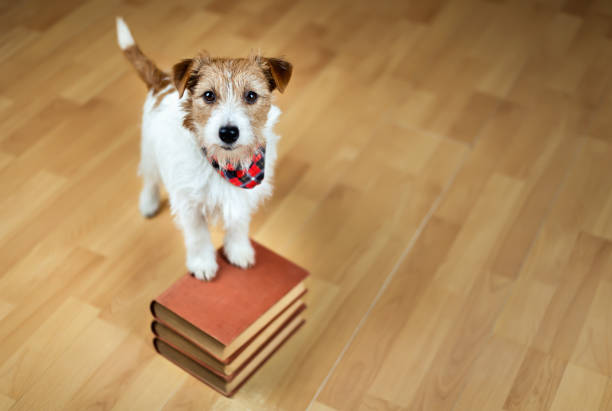
Jack Russells are known for their lively personalities, but sometimes their exuberance can lead to specific behavioral challenges. In this section, we’ll address common Jack Russell behavioral issues and provide you with effective strategies to tackle them.
Addressing Common Jack Russell Behavioral Issues
Excessive Barking: Jack Russells are vocal dogs, and they may bark a lot. To manage this behavior:
Teach the “Quiet” command by rewarding your puppy when they stop barking.
Identify the triggers for barking (like doorbells or visitors) and desensitize your puppy to them through training.
Digging: These dogs have a strong digging instinct. To curb excessive digging:
Provide a designated digging area with soft soil or sand where your puppy can dig freely.
Supervise your puppy when they are in the yard to discourage digging in unwanted areas.
Aggression: Jack Russells can display aggressive behaviors when not properly socialized or when feeling threatened. To manage aggression:
Socialize your puppy early and frequently with other dogs and people.
Consult with a professional dog trainer or behaviorist for help in addressing aggressive behavior.
Training for Social Behavior
Teaching your Jack Russell appropriate social behaviors is essential for their well-being and safety. Here’s how to do it:
Socialization: We’ve discussed the importance of socialization in a previous section. Continue to expose your puppy to various environments, people, and dogs to ensure they are comfortable in different situations.
Manners and Boundaries: Teach your puppy basic manners, such as not jumping on people, not grabbing food from hands, and respecting boundaries. Use positive reinforcement to reward good behavior.
Play and Interaction: Encourage appropriate play and interaction with other dogs. Monitor their interactions to ensure they are playing gently and respectfully.
Behavior Around Strangers: Teach your puppy to be well-behaved around strangers. Use the “Sit” and “Stay” commands to keep them calm in social settings.
Remember that behavioral training is an ongoing process, and consistent reinforcement is key. Be patient and persistent as you work with your Jack Russell to overcome any behavioral challenges. In the next section, we’ll move on to more advanced training, including additional commands and tricks to keep your puppy mentally stimulated and engaged.
Advanced Training
Advanced training takes your Jack Russell puppy’s skills to the next level, providing mental stimulation and strengthening the bond between you and your furry friend. In this section, we’ll explore advanced commands, tricks, and agility training for your Jack Russell.
Advanced Commands
Lie Down: Teaching your puppy to lie down on command is useful for managing their energy and creating moments of calm. Here’s how to do it:
Start with your puppy in a sitting position.
Hold a treat near their nose, then move it down to the ground in front of them.
As they follow the treat with their nose and lie down, say “Lie down” and reward them.
Leave It: The “Leave It” command is essential for keeping your puppy from picking up or chewing on dangerous items. Here’s how to teach it:
Place a treat in your closed hand and show it to your puppy.
Say “Leave it” and wait for them to lose interest in the treat.
When they do, reward them with a different treat.
Tricks and Agility Training
Paw Shake: Teaching your puppy to shake paws is a fun and endearing trick. Here’s how to do it:
Hold a treat in your hand and let your puppy see it.
Say “Shake” and offer your hand. Encourage your puppy to paw your hand.
When they do, reward with the treat and praise.
Fetch: Jack Russells are naturally active and love to play fetch. Here’s how to teach them to retrieve a ball or toy:
Start with a short distance and encourage your puppy to go after the ball or toy.
When they pick it up, use the “Come” command to call them back to you.
Reward with praise and another round of play.
Agility Training: Jack Russells excel in agility training. Set up a mini agility course in your backyard or at a local agility class, and teach your puppy to navigate obstacles like tunnels, jumps, and weave poles. Agility training is both physically and mentally stimulating.
Mental Stimulation
Incorporate mental stimulation into your puppy’s routine to keep them engaged and happy:
Puzzle toys and treat-dispensing toys can challenge your puppy’s problem-solving skills.
Hide treats around the house or yard for your puppy to find during a treasure hunt.
Engage in scent work by hiding scented objects or treats for your puppy to locate.
Advanced training and mental stimulation provide your Jack Russell with a sense of accomplishment and prevent boredom, which can lead to destructive behavior. These activities also foster a strong bond between you and your puppy, making training an enjoyable and rewarding experience.
In the next section, we’ll discuss troubleshooting common training challenges and setbacks, as well as when and how to seek professional help if needed.
Troubleshooting and Seeking Professional Help
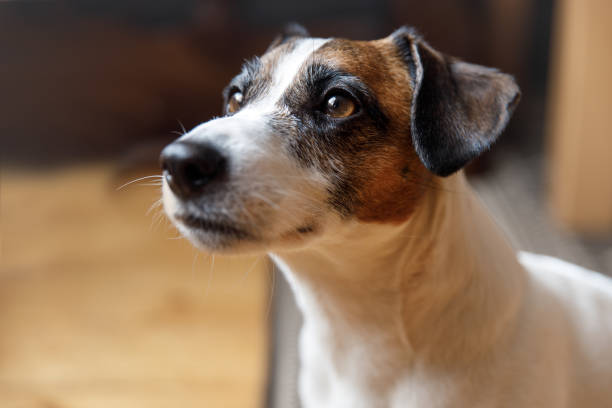
Training your Jack Russell puppy can be a rewarding experience, but it’s not always without its challenges. In this section, we’ll explore how to troubleshoot common training issues and when to consider seeking professional help.
Dealing with Training Challenges and Setbacks
Patience and Consistency: Remember that puppies, just like people, learn at their own pace. Be patient and maintain consistency in your training methods.
Adjust Your Approach: If your puppy is struggling with a particular command, try adjusting your training techniques. Be open to trying different methods to find what works best for your pup.
Avoid Negative Reinforcement: Never resort to punishment or harsh methods. Negative reinforcement can lead to fear and anxiety in your puppy and hinder the training process.
Refocus and Re Engage: If your puppy seems disinterested during training, it may be time for a break. Short, engaging sessions are more effective than long, tedious ones.
Seek Advice: Connect with other experienced dog owners, join online forums, or consult your veterinarian for advice on common training issues.
Seeking Professional Help
In some cases, you may encounter training challenges that require professional guidance. Consider seeking help from a certified dog trainer or a behaviorist if:
Aggression Issues: If your puppy displays aggressive behavior toward people, other dogs, or animals, it’s essential to address this promptly with a professional.
Severe Anxiety: If your puppy exhibits extreme anxiety, fear, or separation anxiety, professional guidance can help alleviate these issues.
Unmanageable Behavioral Problems: If your puppy’s behavioral issues are causing significant disruption in your daily life, a professional can provide tailored solutions.
Complex Training Needs: For specialized training requirements like service dog training, you may need the expertise of a professional trainer.
Complex Obedience Training: For advanced obedience training or competition work, a professional trainer can help fine-tune your puppy’s skills.
Professional trainers and behaviorists have the experience and knowledge to assess your puppy’s unique needs and provide customized training plans. They can also work with you to address specific challenges and develop solutions that are both effective and humane.
Remember that every puppy is unique, and while some may breeze through training, others may require more time and support. Be patient, stay positive, and never hesitate to seek professional help when needed to ensure the best outcome for both you and your Jack Russell puppy.
Conclusion
Congratulations on embarking on the training journey with your Jack Russell puppy! Training is not just about instilling obedience; it’s about building a strong bond and nurturing a happy, well-adjusted companion. Here are some key takeaways to remember as you continue this exciting adventure:
Patience and Consistency: Patience is a virtue in dog training. Be consistent in your training methods, rewards, and expectations. Consistency will help your puppy understand what you want from them.
Positive Reinforcement: Always emphasize positive reinforcement. Reward good behavior with treats, praise, and affection. Your puppy will be more eager to learn when training is a positive experience.
Early Socialization: Begin socialization early to help your Jack Russell become comfortable in various situations. Socialization is key to preventing behavioral issues.
Mental Stimulation: Don’t just focus on physical exercise; engage your puppy’s mind with puzzle toys, training, and interactive games.
Professional Help: If you encounter significant training challenges, don’t hesitate to seek professional assistance. A certified dog trainer or behaviorist can provide valuable insights.
Enjoy the Process: Remember to have fun throughout the training process. Building a relationship with your Jack Russell is a journey that can be filled with joy and memorable moments.
Safety First: Keep your puppy’s safety in mind at all times. Use a leash and collar, ensure they are well-trained in recall, and supervise them in new environments.
Training your Jack Russell is an investment that will pay off with a well-behaved and happy companion. Whether you’re working on basic commands, tackling behavioral issues, or delving into advanced training, remember that the journey is as important as the destination. Enjoy the time spent with your furry friend, celebrate their accomplishments, and embrace the opportunity to grow together.
Your Jack Russell will thrive in an environment filled with love, patience, and consistent training. Cherish the unique personality of your pup, and relish the companionship and loyalty they offer. Here’s to many years of joyful adventures with your four-legged family member!
